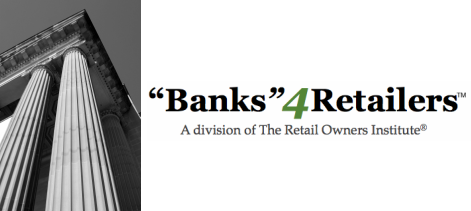Retail Sales Forecasting: Part Art, Part Science
©Copyright, The Retail Owners Institute® and Outcalt & Johnson: Retail Strategists, LLC. All rights reserved.
|
If you are like many retailers, you probably haven’t put together a comprehensive business plan since you first went into business (if you did it then!). But a carefully thought-out plan is essential to the success of your retail business.
Owners and managers who plan ahead invariably achieve more than those who don’t take the time to draw up forecasts and set realistic goals for their stores. One of the most important forecasts you will make is the sales forecast. It requires that you make strategic decisions regarding the future of your business based on accurate information of your past performance and thoughtful projections into the future. In short, planning a sales forecast is part art, part science. Where to Begin The process is not as bad as it sounds. Dig out your sales figures from the past three years (if you’ve been in business that long) and note your month-to-month sales trends. You may find it helpful to summarize sales figures on a chart or spreadsheet. This will give you basic forecasting data. Look at More Than Past Sales Trends
Past sales figures by themselves, however, don’t give all the information you need to write an intelligent sales forecast. You also must consider a multitude of other factors. Here are some important ones to keep in mind. Each of these has probably influenced your past sales, and will affect sales in the future.
Factoring in pricing policies Now, let's look at an example of how to take these variables into account in your planning. These provide the “science” of forecasting. Consider rising (or falling) prices. For example, how should you change your sales plan if you expect rising prices to increase the amount of your average sale by five percent? In this case, you start by multiplying last April’s $40,000 sales figure by 1.05 to find the amount that will keep you even with last year’s sales. $40,000 x 1.05 = $42,000 So, on the basis of rising prices alone, you can plan for a $2,000 increase, assuming your unit sales remain constant. Of course, that $2,000 doesn’t represent a true increase, since your own rising costs offset it. It does, however, give you the new base from which to make your other calculations. Once you’ve figured the new base amount, you can calculate the effect of other factors, such as changes in the number of selling days, then multiply by 1.20 to arrive at a true 20 percent increase. You’ll have to devote some time to calculating how these variables will affect your sales. Making straight month-to-month comparisons can be very misleading. Without accounting for an increase in prices, you could easily conclude that you are achieving good sales increases when your sales are actually dropping. The Final Steps The next step in the sales forecasting process is where it becomes an “art.” This again requires you to apply your judgment. First, look at your projections:
Then, compare your forecasts to actual sales results as you see them develop.
Make sure that when you have completed this process that it all makes sense and feels right. Satisfy yourself that your forecasts are logical and complete. Your sales forecasts are the backbone of your business plan.
You should have plans for how to react to a variety of future changes, either positive or negative. It is particularly critical to plan for a worst-case scenario, so you know some of your options ahead of time. Having contingency plans will enable you to follow your primary plan more confidently. Sales forecasting involves both “science” and “art.” There are preexisting formulas to help you in factoring different variables in your forecast, giving you the freedom to make sound, sensible estimations and assumptions based on those formulas. Don’t let the process intimidate you; take advantage of it and get the best possible strategic planning for your business. |
